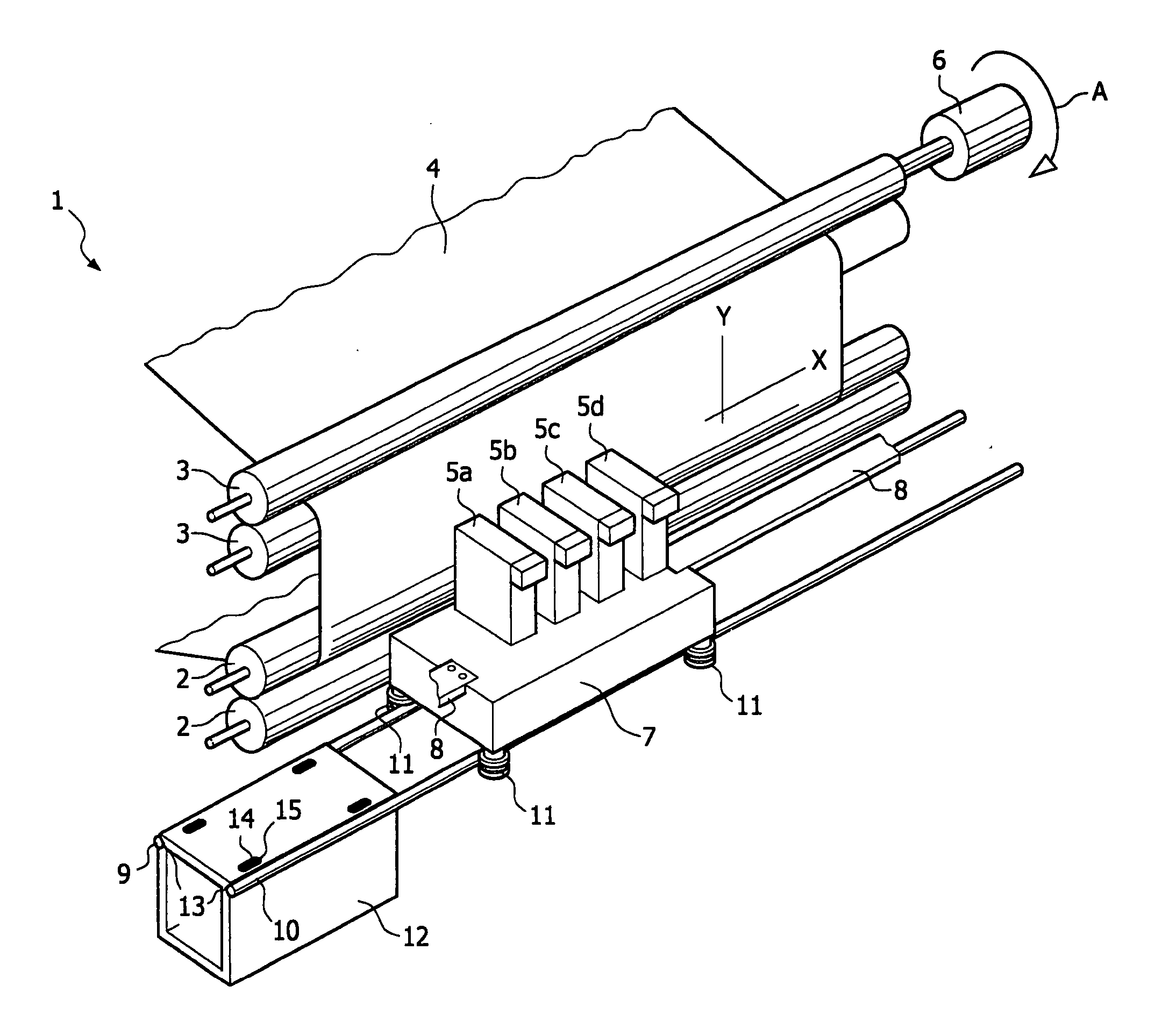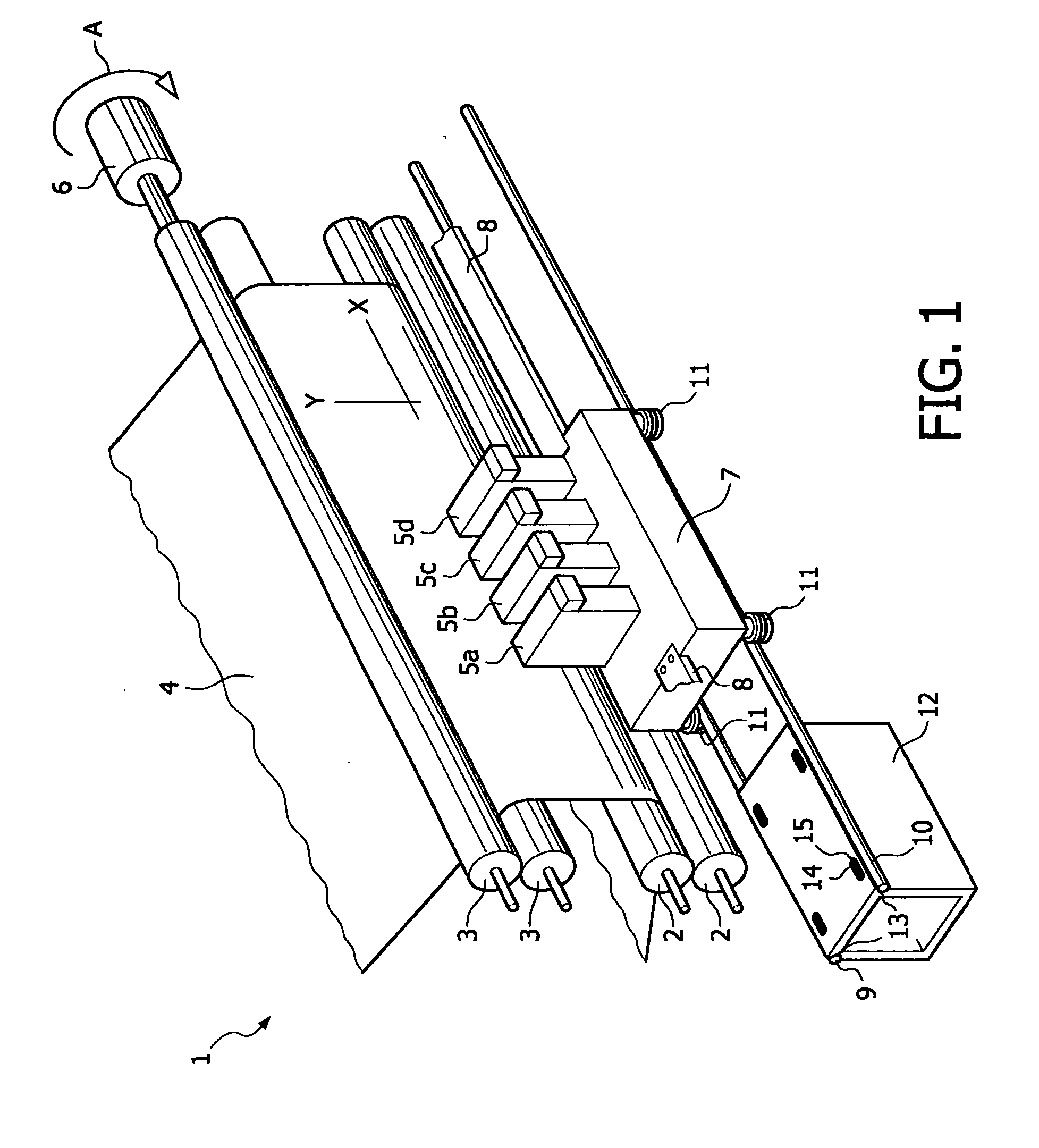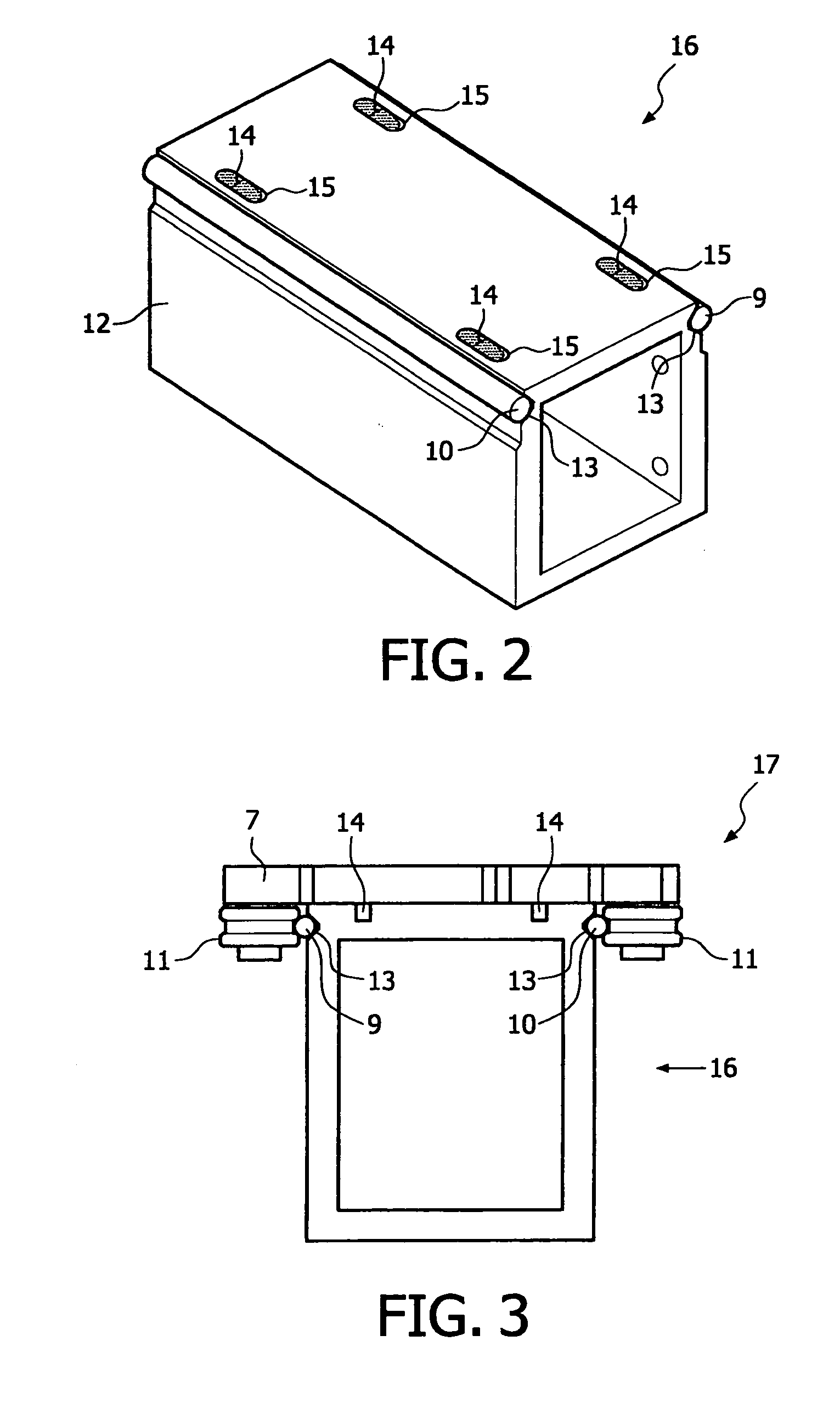Guide for guiding a moveable carriage of a printer in a print direction, and printer
a printer and moveable technology, applied in the direction of printing, spacing mechanisms, printing mechanisms, etc., can solve the problems of hindering the movement of the carriage along the guide, and the initial linear design of the rod cannot be secured
- Summary
- Abstract
- Description
- Claims
- Application Information
AI Technical Summary
Benefits of technology
Problems solved by technology
Method used
Image
Examples
Embodiment Construction
[0019] The present invention will now be described with reference to the accompanying drawings, wherein the same or similar elements will be identified with the same reference numerals. FIG. 1 is a perspective view of an inkjet printer 1. The printer 1 includes two pairs of rollers 2 and 3 for supporting a receiving material 4, for example a sheet of paper, and feeding it along four print heads 5a, 5b, 5c and 5d (each print head for one of the colors black, cyan, magenta and yellow). Roller pair 3 is drivable by means of motor 6. In this case the top one of the two rollers 3 is actively driven in a direction indicated by arrow A. As a result, the receiving material 4 can be displaced in the sub-scanning direction Y so that the receiving material 4 can be moved with respect to the print heads 5a, 5b, 5c, 5d. A scanning carriage 7 carries the four print heads 5a, 5b, 5c and 5d and can be reciprocated in the main scanning direction X, parallel to the roller pairs 2 and 3. For this purp...
PUM
 Login to View More
Login to View More Abstract
Description
Claims
Application Information
 Login to View More
Login to View More - R&D
- Intellectual Property
- Life Sciences
- Materials
- Tech Scout
- Unparalleled Data Quality
- Higher Quality Content
- 60% Fewer Hallucinations
Browse by: Latest US Patents, China's latest patents, Technical Efficacy Thesaurus, Application Domain, Technology Topic, Popular Technical Reports.
© 2025 PatSnap. All rights reserved.Legal|Privacy policy|Modern Slavery Act Transparency Statement|Sitemap|About US| Contact US: help@patsnap.com



